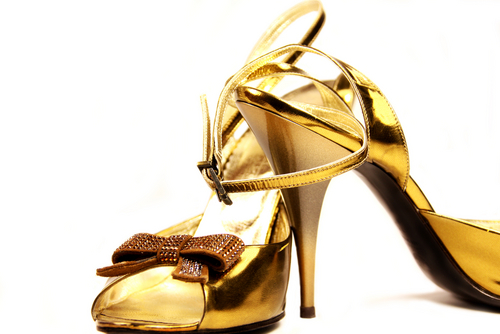Short answer
Yes, high heels are very bad for you. Anything that has a great danger of disfiguring or even killing you should be avoided.
Long answer
High heels are in high demand as a stylish enhancer, making you appear taller and accentuating your legs to make them look longer and leaner. Additionally, some studies have shown wearing high heels gives shape to calf muscles and strengthens pelvic floor muscles. So then, what makes them so bad?
Well, unless your goal in life is to use heels to attract someone to have children with - no matter what the cost - there are some very real dangers of wearing high heels that you need to know about.
The problems caused by high heels happen primarily due to two reasons: the body is not in the correct posture and pressure is unevenly distributed to places that should not be absorbing so much shock. With regard to incorrect posture, when a person wears high heels, the body is propelled slightly forward. While a casual observer may not notice this, the body does, since the hips and spine are thrust out of alignment. This can cause a myriad of problems, including pain in the hip joints, back pain, foraminal stenosis (a spinal nerve condition characterized by intense shooting pain, spasms, numbness, tingling, etc.), spondylolisthesis (a condition in which one vertebra slips over another), etc. Additionally, osteoarthritis can be either caused or made worse by wearing heels - especially ones that go over two inches in height.
The fact that body weight is distributed unevenly - and primarily to the knees, hips, and front of the foot - means that besides chronic pain in the mentioned areas, people wearing heels run the risk of developing shorter calf muscles and thicker tendons. For people who are longtime regular wearers of heels, this can lead to a shortening of the Achilles tendon to the point that the heel cannot fully touch the ground. Walking can become a nightmare and indeed some are unable to do so.
Yet another problem from heels is that the body being pushed forward restricts circulation in the lower limbs. This can lead to feeling weak, dizzy, or worse - developing a blood clot that can lead to heart attack or stroke.
Still thinking about how heels can make your legs and calves look more defined? Then consider this list of unsightly - and painful - foot problems: bunions, corns, callouses, ingrown toenails, and hammertoes.
High heels may be in demand for style, but they can quite literally kill you.
Possible short-term side effects
- corns
- foot pain
- ingrown toenails
- callouses
- hammertoes
Possible long-term side effects
- osteoarthritis
- spondylolisthesis
- foraminal stenosis
- heart attack
- stroke
- chronic pain
- shortened achilles tendon

Benefits
- may strengthen pelvic muscles
- can make legs look leaner
- can give definition to calf muscles
Healthier alternatives
- flat shoes
- sandals
- platform shoes
 Approved by
Approved by 















